Dental implants have revolutionized modern dentistry, offering patients a permanent, natural-looking solution for missing teeth. Whether you’ve lost one tooth or an entire arch, implants can restore both your smile and your confidence. But did you know there are different types of dental implants, each designed for specific cases and anatomical needs? Understanding these variations helps you make an informed decision when planning your treatment abroad or at home. In this guide, we’ll break down the main types of dental implants, how they work, and which might be best suited for your situation.
The Three Main Types of Dental Implants
1. Endosteal Implants (Most Common Type)
Endosteal implants are the most widely used type and are considered the gold standard in implant dentistry. They are shaped like small screws or cylinders and are placed directly into the jawbone. After the bone heals and integrates with the implant, a custom crown is attached on top.

Best suited for:
-
Patients with sufficient jawbone density and volume.
-
Individuals missing one or more teeth.
Advantages:
-
High long-term success rate (over 95%).
-
Feels and functions like a natural tooth.
-
Compatible with single crowns, bridges, or full-arch restorations.
Materials Used:
-
Titanium implants – durable, lightweight, biocompatible.
-
Zirconia implants – metal-free, highly aesthetic, ideal for patients with metal sensitivities.
2. Subperiosteal Implants (For Low Bone Volume)
Subperiosteal implants are placed on top of the jawbone, but beneath the gum tissue. Instead of being anchored within the bone, they sit on a metal framework that holds the prosthetic teeth in place.

Best suited for:
-
Patients with minimal bone height who cannot undergo bone grafting.
-
Those seeking a less invasive option compared to endosteal implants.
Advantages:
-
Shorter healing time.
-
Avoids complex bone graft procedures.
-
Suitable for patients with thinner jawbone structure.
Drawbacks:
-
Slightly lower long-term stability compared to endosteal implants.
-
Less commonly used today due to advancements in bone regeneration and implant technology.
3. Zygomatic Implants (For Severe Bone Loss)
Zygomatic implants are a specialized solution for patients with severe bone loss in the upper jaw where traditional implants aren’t possible. Instead of being anchored in the jawbone, these longer implants are fixed into the zygoma (cheekbone), which provides a strong, dense foundation.

Best suited for:
-
Patients who have experienced significant upper jawbone resorption.
-
Individuals who want to avoid sinus lift or major bone graft surgery.
-
Full-mouth reconstructions and “All-on-4” cases in the upper jaw.
Advantages:
-
No need for bone grafting.
-
Immediate loading is often possible (fixed teeth placed in 24–48 hours).
-
High success rate in advanced implantology centers.
Different Implant Systems by Placement Technique
In addition to anatomical differences, implants are also categorized by how and when they are placed.
1. Immediate-Load Implants (Same-Day Implants)
Also known as “teeth-in-a-day,” these implants allow placement of a temporary crown or bridge immediately after surgery.
Benefits:
-
Fewer appointments.
-
Instant aesthetic improvement.
-
Especially popular for dental tourism patients with limited travel time.
Note: Not suitable for every case — requires excellent bone density and primary stability.
2. Two-Stage Implants
This is the traditional method and remains the most predictable for long-term success.
Stage 1: The implant is inserted into the bone and left to heal (osseointegration) for 3–6 months.
Stage 2: After healing, the abutment and crown are attached.
Advantages:
-
Highest success rate.
-
Suitable for complex or multiple implants.
3. Mini Dental Implants
Mini implants are smaller in diameter (around 2–3 mm) than conventional implants. They’re used primarily for stabilizing dentures or in narrow bone areas.
Best suited for:
-
Patients who can’t undergo bone grafting.
-
Temporary or transitional solutions.
Advantages:
-
Minimally invasive.
-
Faster healing.
-
Affordable compared to full-sized implants.
Drawbacks:
-
Not ideal for heavy bite forces.
-
Shorter lifespan than standard implants.
Material Options for Dental Implants
Modern dental implants come in two main materials:
| Material | Description | Advantages | Ideal For |
|---|---|---|---|
| Titanium | Most widely used metal in implantology | Proven durability, strong osseointegration | Most patients |
| Zirconia | Metal-free, tooth-colored ceramic | High aesthetics, biocompatible | Patients with metal allergies or high smile line |
Titanium implants remain the gold standard for most cases, but zirconia implants are gaining popularity for their natural appearance and holistic properties.
Choosing the Right Type of Dental Implant
The best implant type depends on several key factors:
-
Bone density and volume
-
Number of missing teeth
-
Location (upper or lower jaw)
-
Gum health and general oral condition
-
Budget and aesthetic goals
A comprehensive consultation with your dentist — including 3D imaging and bone analysis — will determine the most suitable option.
At Tarja Dental Clinic in Albania, every implant plan is fully customized using advanced digital diagnostics, ensuring precision, comfort, and long-lasting results.
Why Choose Tarja Dental Clinic for Dental Implants
-
Experienced implantologists trained in Italy and Germany.
-
3D-guided implant placement for unparalleled accuracy.
-
High-quality materials (Straumann, Nobel Biocare, MIS, and Swiss systems).
-
Minimally invasive surgery for faster recovery.
-
Affordable treatment packages for international patients.
-
Comprehensive aftercare and remote follow-up support.
Whether you need a single implant or a full-mouth restoration, Tarja Dental Clinic provides a seamless experience from consultation to smile transformation.
Conclusion
Understanding the different types of dental implants helps you make an informed, confident choice for your oral health. From endosteal to zygomatic implants, modern dentistry offers reliable solutions for nearly every case of tooth loss.
Choosing an experienced clinic with advanced technology, like Tarja Dental Clinic in Albania ensures precise planning, lasting stability, and a natural-looking result that can last a lifetime.
Dental implants are not just replacements for missing teeth, they are an investment in function, confidence, and quality of life.

